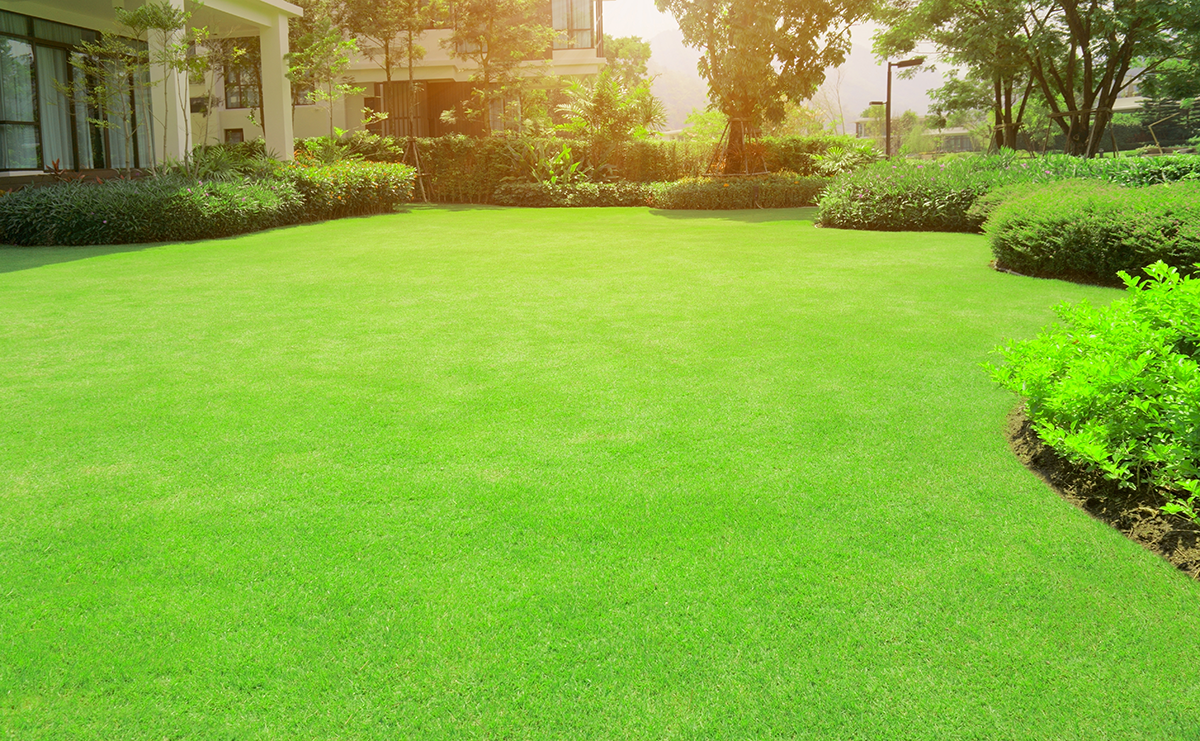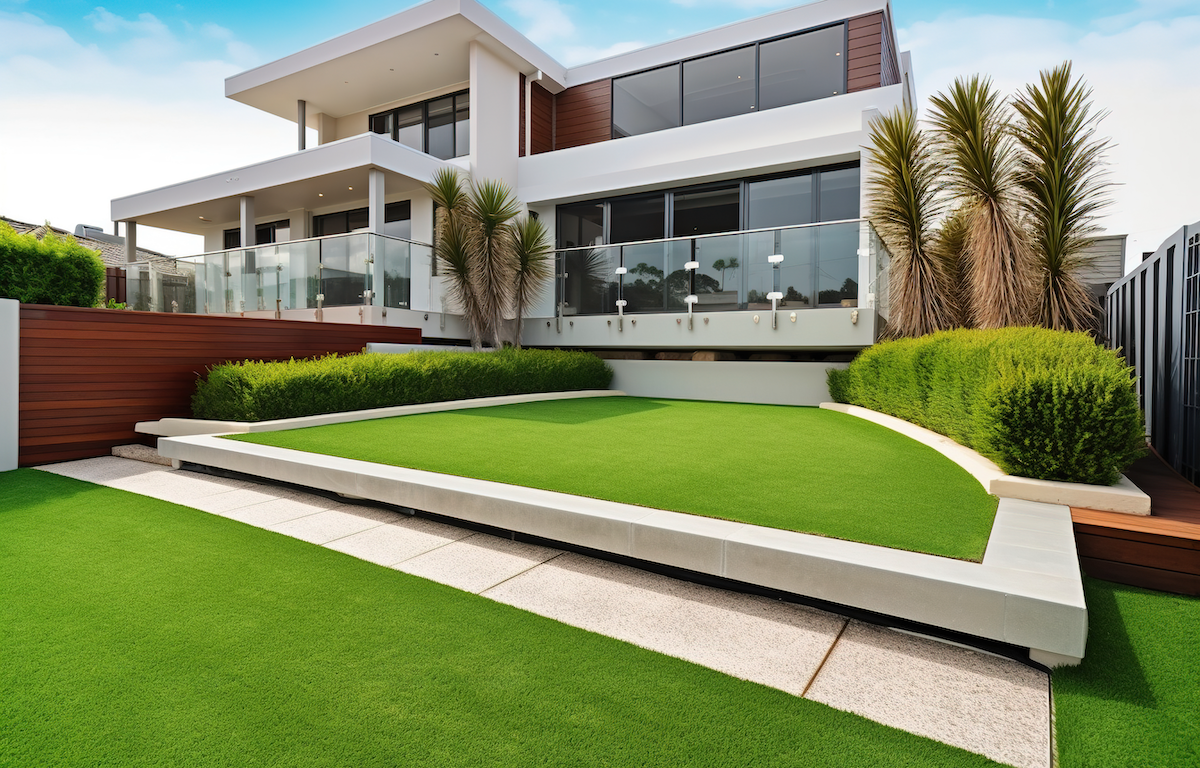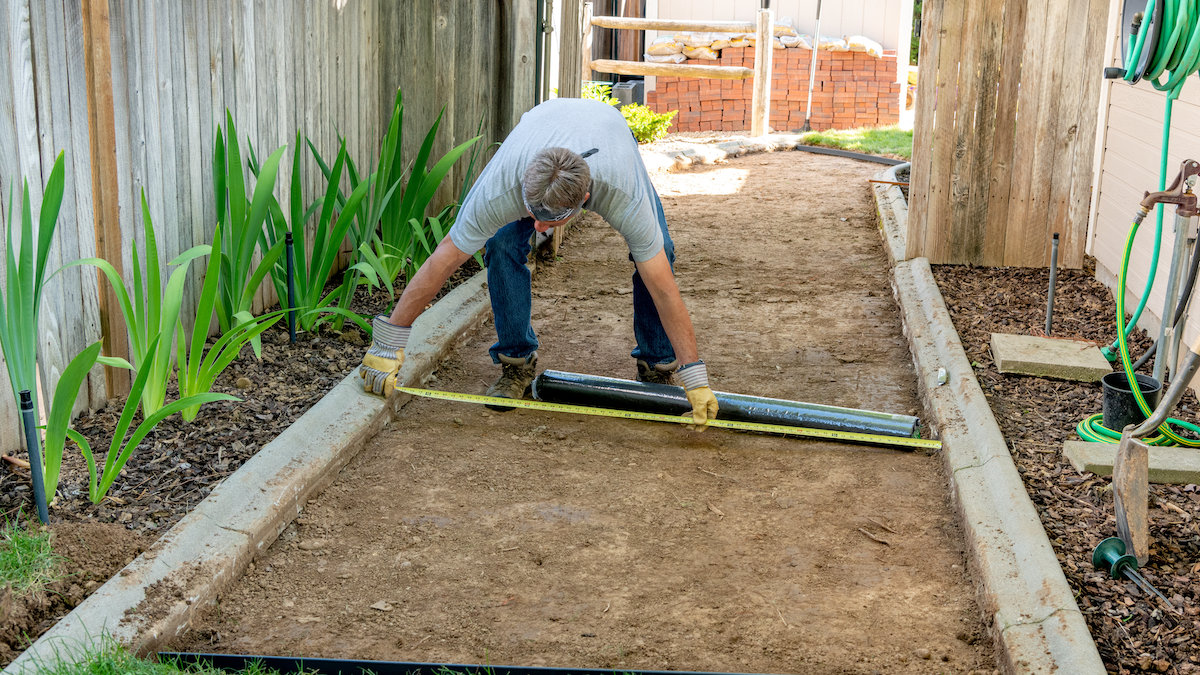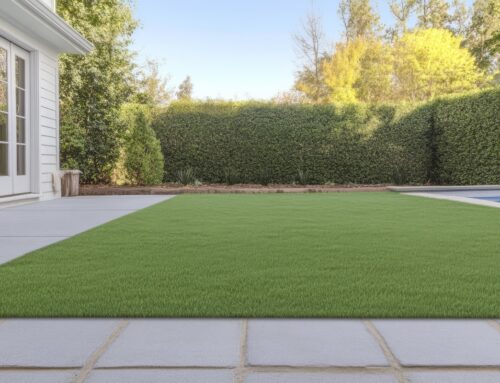Last Updated on July 11, 2024 by ReTurf
Thinking about switching to artificial turf? It’s a solid choice for a low-maintenance, always-green yard.
But here’s the real dirt: just how well does this faux grass handle the wet stuff?
Whether it’s a light sprinkle or a torrential downpour, understanding how synthetic grass manages water is important. So before you roll out the green carpet, let’s go over some of the things you should know about artificial turf and its relationship with the rain.
Does Water Pass Through Artificial Turf?
Yes, it does. These days, artificial turf is made with drainage in mind. The first-generation synthetic grass, often simply referred to as Astroturf after the brand that became synonymous with the product, was quite different from today’s artificial turf.
Originally developed in the 1960s and popularized in sports stadiums, this early turf did not focus much on water drainage. It typically consisted of a dense, carpet-like material laid over concrete or compacted earth, which led to poor water management.
Synthetic grass technology has come a long way since the 60s, and modern artificial turf systems are engineered to address these challenges:
- The top layer of artificial turf is the visible grass blade-like fibers, which are non-absorbent.
- Below these fibers, there’s often a layer of infill, which can be made of materials like silica sand or recycled rubber. The infill helps to keep the turf blades upright and adds a bit of cushioning, but like the blades, it doesn’t absorb water.
- The backing layer is typically made from a woven or non-woven fabric and is perforated with numerous tiny holes. It’s these holes that allow water to drain through without gathering on top. When it rains, water lands on the surface of the turf and filters down through the fibers and infill, reaching the perforated backing. Once at the backing, the water drains through the holes much like water escaping through a strainer.Imagine you’re pouring water through a kitchen strainer—that’s pretty much how this type of backing on artificial turf works. When it rains, the water hits the surface, and instead of collecting there and making a soggy mess, it drips down through these holes in the backing.
- Beneath the backing, the installation typically includes a base of crushed gravel and sand, which further facilitates drainage. This base layer is compact and stable yet porous enough to allow water to seep through and away from the turf, helping prevent any accumulation or puddling.
This system makes artificial turf an excellent solution for those looking to avoid waterlogged yards while enjoying the aesthetic and functional benefits of a lush, green lawn.

How Good is the Drainage?
Pretty good, actually! How good depends on both the quality of the installation and the quality of the turf itself.
High-quality artificial grass is designed to let water flow through it efficiently, thanks to those holes in the backing material. It’s set up to avoid any soggy spots that could mess with the turf or turn your yard into a mini swamp like many natural grass yards can become following rain:

A professionally-installed artificial turf yard can offer superior drainage compared to traditional grass and sod, especially in areas with heavy clay, compacted, or other problematic soils. This not only keeps the yard drier but also makes it usable soon after heavy rainfall, a significant advantage over natural grass yards that can remain soggy and unusable for some time following rain.
Note: The slope during installation is key—it gently guides the water off your turf and into the drainage system, rather than letting it sit or, worse, flow back towards your house or building. During this phase, the ground is shaped to make sure the slope is uniform and consistent across the entire area where the turf will be installed. It involves meticulous grading, often using tools like laser levels or grading machinery to ensure precision. Typically, a gradient of about 1% to 2% is sufficient. This means that for every 100 feet of turf, the ground should drop 1 to 2 feet in elevation. This subtle angle isn’t noticeable to the eye, but is enough to encourage water to flow in the right direction.
If the turf is laid out right, you’ll have this solid, slightly sloped base underneath that complements the drainage holes in the turf. This base typically involves sub-layers of materials like gravel and sand, which not only support the turf but also help water move through them quickly. We’ll discuss the base in more detail below.

Is Synthetic Grass Considered “Permeable”?
In a way, yes. The grass blades and the infill (that’s the material between the blades that keeps them standing up and looking natural) aren’t really permeable. They don’t soak up water like a sponge. But the backing does. That’s where the water finds its way through.
The backing is usually made from a tough, fabric-like material, and it’s full of those little holes we discussed above. It’s through these holes that water gets to pass through.
When we talk about something being permeable, we’re referring to its ability to let liquids or gases pass through it. Think about a sponge—water goes through it rather than just sitting on top. In the case of materials like your artificial turf, permeable means that the turf allows water to flow through itself instead of collecting on the surface and causing puddles.

Think of artificial turf as semi-permeable. It’s not going to absorb water like your garden soil would, but it’s engineered to let water pass right through it to the ground underneath.
This helps avoid waterlogging on the surface, making the turf more like a sieve than a sponge. Water touches the surface, and just zips right through those holes in the backing, out of the turf, and into the drainage system or the ground below.
How to Make Turf “Permeable”?
To keep your turf installation draining well, you’ve got to set it up right from the start.
Tip #1: Choose the Right Turf
Pick a type that has a reliably perforated backing. These tiny holes in the backing are game changers, letting water pass through instead of pooling on your new grass and turning your backyard BBQ into a waterlogged mess.
Tip #2: Prep the Base Properly
The ground under the turf needs to be prepared with materials that help water drain. You’ll want to clear out the area and make sure there’s a slight slope to help with water runoff.
A well-prepared base is key. Consider using materials like compacted gravel or coarse sand.
Tip #3: Add a Drainage Layer
Before you roll out the turf, lay down a layer of crushed stone or gravel. Besides the added stability, it’s also important for drainage.
Tip #4: Select the Right Infill
Go for a permeable infill like silica sand or rubber granules. These materials help the turf stand up straight while allowing water to filter down through the base.
What About the Base?
A good permeable base is what stands between your turf and potential water issues. Think of it like the foundation of a house. If it’s solid, everything that goes on top will hold up better.
What to Use
- Crushed Stone: Granite or limestone works great for drainage.
- Gravel: Different sizes of gravel can layer up to create a really effective drainage system.
- Sand: A bit of coarse sand can help with water filtration.
Installation Tips
- Keep it Compact: Make sure each layer is compacted well to avoid settling that can mess up the drainage.
- Maintain a Slope: Aim for a slight slope in the base—about 1% to 2%—to encourage water to flow off rather than pool.
- Depth: Depending on what you’re using the turf for, you’ll want a base that’s about 3 to 4 inches deep for the best performance.
By focusing on these aspects from the start, you can make sure your artificial turf drains effectively, keeping your yard looking good and functional, rain or shine. Plus, it’ll save you from dealing with any waterlogged messes in the future.
Advantages of Professional Installation for Artificial Turf

DIY artificial turf installation might sound like a fun weekend project, but there are some compelling reasons why handing this job over to the pros can be a better move:
1. Experience
Professional installers have the experience and skills needed to make sure that the turf is installed correctly the first time. They know all the ins and outs, from choosing the right materials to handling the unexpected challenges that can pop up during installation.
They’ll make sure the base is appropriately leveled/graded and compacted, which is critical for long-term durability and proper drainage away from your home’s foundation.
2. Proper Tools & Equipment
Professional teams come equipped with the right tools and machinery for the job. Some of these tools, like heavy rollers for compacting the base or specialized cutters for the turf, might not be readily available in the average DIYer’s garage.
Using the proper tools not only speeds up the installation process, but also helps make sure that everything is done precisely throughout the process.
3. Avoiding Common Mistakes
It’s easy to underestimate the complexity of preparing the base or to incorrectly measure and cut the turf, leading to costly mistakes.
Pros have the training to avoid these pitfalls. They know how to handle tricky areas like slopes, irregular shapes, or areas around obstacles like trees or garden paths, ensuring a smooth and attractive finish.
4. Time & Labor Savings
Installing artificial turf is labor-intensive, especially the ground preparation phase. It can take a considerable amount of time if you’re not familiar with the process.
Professional installers can complete the job much faster due to their skills and team size. This means you get to enjoy your new lawn sooner rather than later, without the backbreaking work.
5. Warranty and Longevity
Many professional turf installers offer warranties for their work, giving you peace of mind. If something goes wrong due to the installation process, you’re covered. Plus, properly installed turf will last much longer than turf that has been installed incorrectly.
6. Optimal Drainage
This one’s big—professional installers are trained to maximize drainage capabilities by properly installing the base materials and ensuring the turf’s permeability is at its best. Good drainage is key to preventing water pooling and helping your yard stay dry and usable.
7. Cost Savings
Trying to save money by DIY-ing a large turf installation project can often backfire, leading to higher costs in the long run. The inefficiencies of an inexperienced DIYer can result in mistakes and wasted materials, necessitating additional purchases to replace what was discarded.

Furthermore, DIYers might need to invest in the specialized tools required for a proper installation—significantly adding to the initial budget. These factors, combined with the potential use of lower-quality turf compared to the superior grade used by professionals, mean that what starts out as a cost-saving effort can quickly become more expensive than hiring experienced installers from the start.
Final Thoughts on Artificial Turf Drainage
Whether you’re gunning for a backyard that rivals the greens at Augusta, or just sick of dealing with the mud pit that sod and grass lawns can turn into after a storm, the right artificial turf can be a true game changer.
Remember, don’t just slap down any old low-quality fake grass and call it a day. Install it right the first time, and you’ll have a lawn that’s more about fun and less about maintenance.

Here’s to fewer puddles and more beautiful lawns! Whether you’re hosting the next big neighborhood BBQ or just enjoying some time outdoors, your new artificial turf has got your back—rain checks are a thing of the past.



